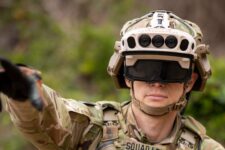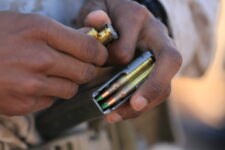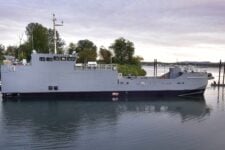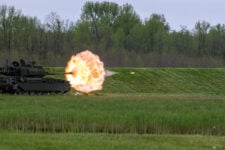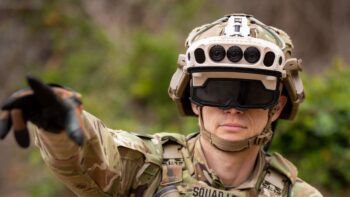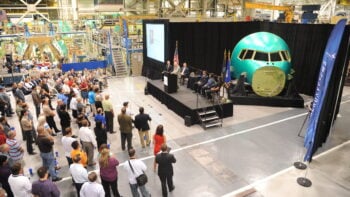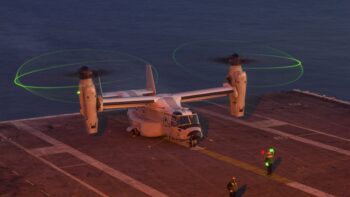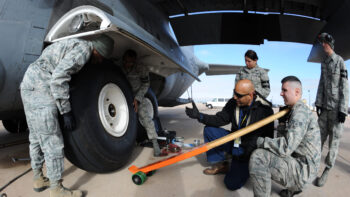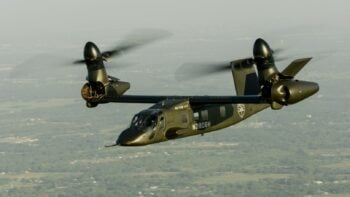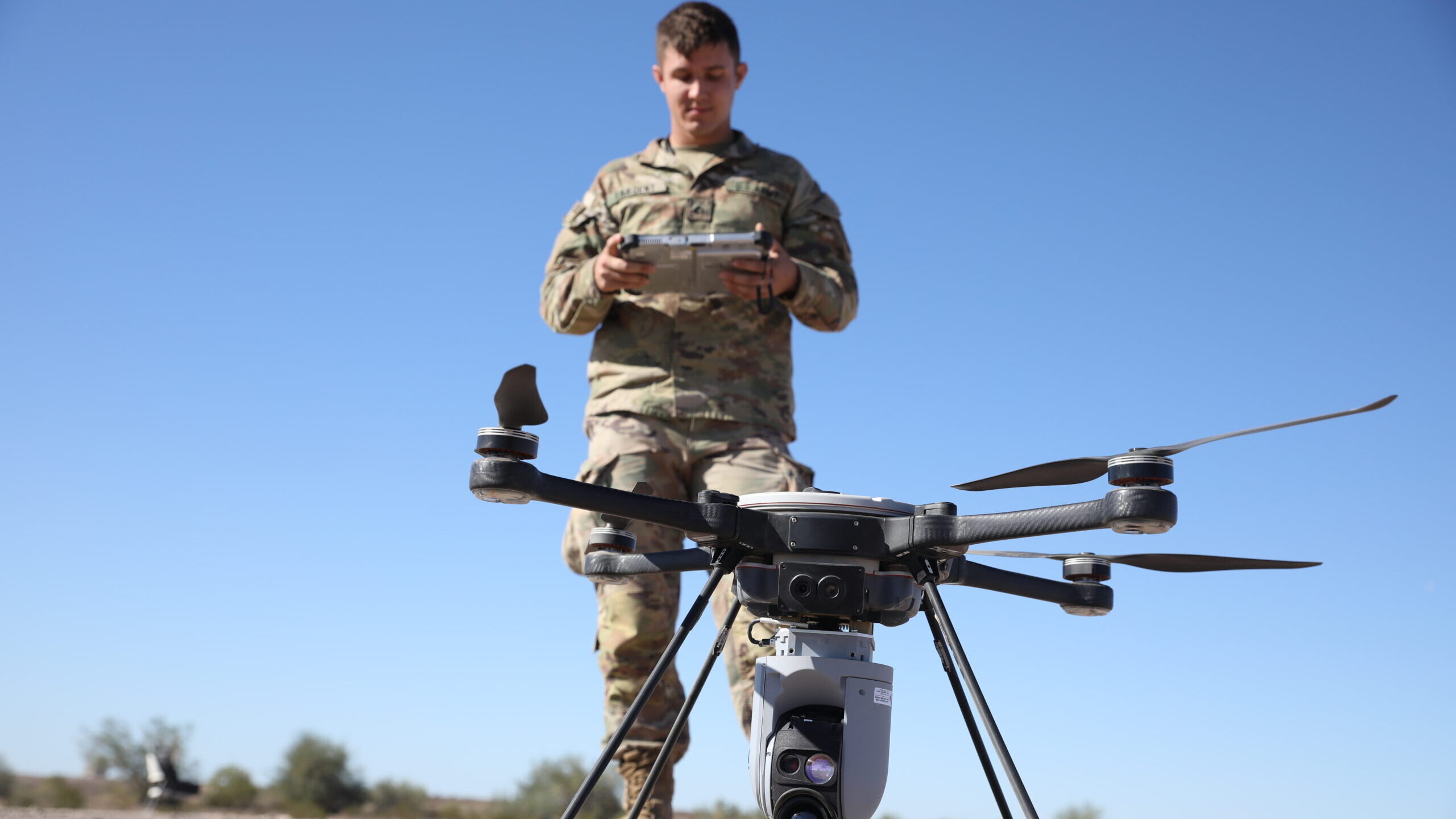
Army Pfc. Benjamin Sargent, assigned to 82nd Airborne Division, prepares a multi-mission payload unmanned aerial system for launch during Project Convergence in October 2021. (US Army/Sgt. Marita Schwab)
WASHINGTON – From experimenting with sister service’ equipment to testing out two new soldier-robot prototyping formations, the US Army is preparing for its fourth Project Convergence capstone event next spring with a host of new tech.
Although the service has not disclosed a laundry list of its objectives and new capabilities for its 2024 event at Fort Irwin and Camp Pendleton in California, a trio of Army generals previewed the service’s contribution to larger Joint All Domain Command and Control (JADC2) initiative that includes the help the other US services and foreign nations.
At the Camp Pendleton portion of the exercise, for example, the Army is focusing on offensive and defensive fires. The generals did not disclose exactly what systems the Army will experiment with but fires can include anything from Paladin self-propelled howitzers and Patriot launchers to the service’s new Precision Strike Missile.
“I envision, at a point in time, there’ll be a single system that can do offensive-defensive fires,” Army Futures Command chief Gen. James Rainey said Wednesday. “We’re a little bit of a ways [from] that but right now, today, we’re in the process of figuring out how to connect the different sensors, from offensive and defensive fires, through the different decision makers and bring this sustainment enterprise to bear in a way.”
Rainey’ deputy, Lt. Gen. Ross Coffman, added that that portion of the exercise would also feature the use of artificial intelligence to help ensure the services can “talk to one another” and work together under a common operating picture.
Ballistic missile threats were previously slated to take centerstage of the demo this year for the first time, but the AFC didn’t disclose if that was still the plan, and a list of just which sensors, launchers, and command and control (C2) systems will be featured likewise has not been disclosed. However, the Army’s Integrated Battle Command System, billed as the C2 heart of its air and missile defense architecture, is likely a sure bet.
Meanwhile, out at Fort Irwin, the service wants to use a combination of light and heavy formations to test out new capabilities for offensive operations.
During a Dec. 1 interview with Breaking Defense, Brig Gen. Geoffrey Norman – the director of the Next-Generation Combat Vehicle Cross Functional Team — explained that this portion of the event includes a joint forcible entry exercise, as well as a penetration and exploitation one.
Soldiers there, he said, will be outfitted with a host of capabilities ranging from robotic combat vehicle prototypes previously acquired, and there will be a cavalry formation from US Army Forces Command equipped with a variety of ground and air robots beyond what they have today.
“It’s gonna be really exciting to see how they’re able to fight differently and fight more effectively with those ground and air robotic systems, really an evolution of what we saw in previous project convergence experiments,” he added.
RELATED: ‘It’s not translating’: Army general says to focus on realistic robotic integration
In a similar vein, two new human-machine integration prototyping units recently stood up by the service will be in attendance too. One is a light infantry platoon from Fort Moore in Georgia, while the other is a heavier, opposing force unit from the National Training Center. Both have received a differing mix of new robotic capabilities.
Rainey said their feedback from there will, in part, spinout similar prototyping platoons into “real Army formations” by early 2025.
But it’s just not unmanned ground and aerial vehicles being demoed this year: Rainey said the Army is eager to evaluate an unspecified Marine Corps’ autonomous watercraft.
“We said, ‘Hey, make sure you bring that out to Project Convergence,’” he said.
The Army’s newly established logistics cross-functional team, Rainey explained, will be on site to collect data about that watercraft’s performance which it could potentially use to avoid conducting a timely watercraft study and find ways to save dollars.
“It’s not a total solution. They have a different problem but there’s a lot of overlap,” Rainey said of the Marines.
Alongside the Navy’s Project Overmatch and the Air Force’s DAF Battle Network, Project Convergence is the Army’s contribution to the Pentagon’s sprawling Joint All Domain Command and Control initiative, whose goal is to find ways to streamline getting information from “sensor-to-shooter” in increasingly complex and digitized combat environments.
